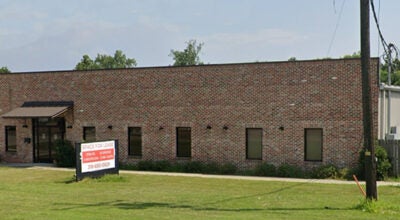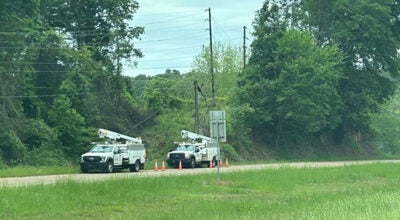Board of supervisors examining cost of storm shelter
Published 12:11 am Tuesday, September 24, 2013
NATCHEZ — Concerns about cost left blue skies looking a little gray Monday as the Adams County Board of Supervisors delayed making a decision about the FEMA 361 storm shelter.
Meant to be able to sustain an F5 tornado and be self-sufficient for 72 hours, the Federal Emergency Management Agency originally budgeted $2.906 million in federal grant funds for the 10,000-square foot project when it was given initial approval in 2009.
Adams County had planned to make up the difference in costs — a required five percent match — without putting actual dollars into the project by using in-kind contributions.
But when the bids for the project came in last week at approximately $3.6 million, the likelihood of that plan coming to fruition shrank considerably.
Adams County Emergency Management Director Stan Owens said in part the discrepancy was caused due to increases in construction costs that accrued during the time the project was in planning.
Joseph Zaydel with AEDD-plus, the architecture firm overseeing the project, said that by value engineering — reducing costs by removing or reducing some elements of construction — the county could reduce its total share to $162,165.
Value engineering could include reducing the plans for the building’s asphalt parking lot to have only one inch of asphalt overlay with a three-inch base rather than two inches of overlay with a six inch base, Zaydel said.
“It doesn’t take away from the value of the project, and it will save $55,000,” he said. “We don’t see any 18-wheelers going through the parking lot to tear it up.”
Zaydel likewise said using a plastic fence rather than a chain link fence would save $6,000, and that the general contractor had agreed to a two-month reduction in work time and $55,000 less.
On top of the approximately $162,000 the county would have to pay for the project, the county has previously agreed to provide approximately $20,000 in dirt for the project, Zaydel said.
Supervisor Mike Lazarus said he felt inclined to reject the bids offered because the county doesn’t have an extra $180,000 in its budget, and alluded to past grant projects that cost the county more than was initially projected.
“You can’t spend what you don’t have,” Lazarus said. “Can we cut something somewhere, what do you cut?
“We start the project, it looks very rosy, the county doesn’t put any money in — we will put in our part with in-kind — but how does it turn out every time?”
Zaydel reminded the supervisors in the past the county was able to go back to FEMA and the Mississippi Emergency Management Agency and get additional reimbursement for projects that cost more than initial estimates.
“We can call FEMA and MEMA and ask for an overrun in funding, but they can’t guarantee us that,” he said.
Lazarus said he was not out to kill the project, but added the shelter will for the most part be used as another community center.
The grant funding the project requires the shelter be built on school grounds, and it will be located next to the Steckler Building at Natchez High School. The school district will be given access to the shelter in order to exercise the building during non-storm events.
Supervisors President Darryl Grennell said he believes the project is ultimately worth it.
“The $100,000 is nothing compared to the millions the federal government is putting into it,” he said. “When you look at the high school, with all that glass, those students don’t have anywhere to evacuate to. That shelter is necessary.”
Grennell likewise said the shelter could be used in the event of an evacuation of part of the county due to weather.
“Any time you can prevent the loss of lives, I think it is important,” he said.
Grennell asked if the county could borrow the money to bridge the funding gap, or if the supervisors could approach school district or Natchez city officials about funding.
Adams County Administrator Joe Murray likewise asked if the county could use the building as a revenue generator by hosting events there during the year.
The supervisors ultimately decided to delay awarding a bid until they could find out if other local sources would be willing to input some money.
Zaydel said the bids are good until Oct. 17, though he warned the supervisors that of the six contractors who requested bid information packets, only two returned them.
“If we reject now and go back to bid, there is nothing that says we can get those two contractors to come back to the table now or that those prices will be lower,” he said.
“The two contractors were only $6,000 off each other on the base bid, so that tells us that’s pretty much market value. Where we are and the toughest decision for y’all is that we can either try to figure this out in the long run and make a plan over the next couple of years, or you can reject and take a very big gamble in the future.”





